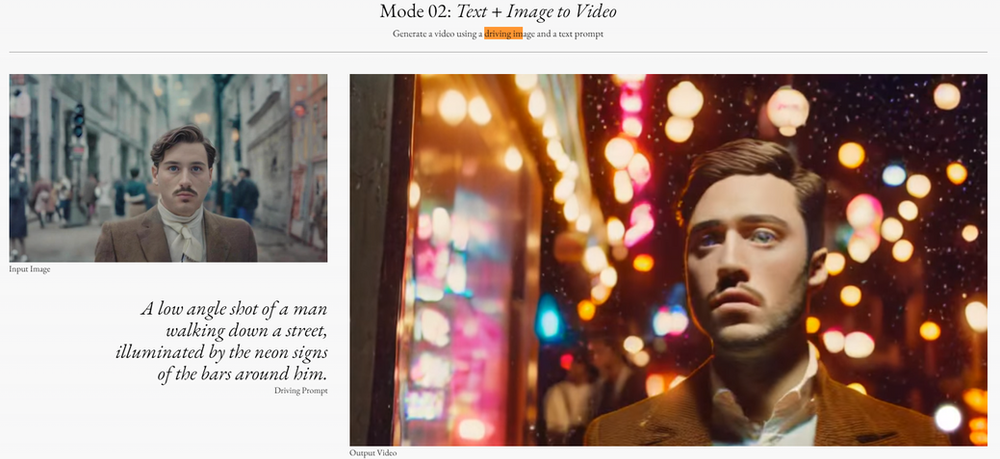Video editing is an art form, and it takes a lot of effort to create the perfect video that tells a compelling story.
But what if I told you that artificial intelligence (AI) is about to change the game?
What if you could generate videos from text prompts, breathing life into still images and adding motion to static scenes?
https://video.wixstatic.com/video/be436c_10da6547e20c4d65b41065a725a273cc/720p/mp4/file.mp4
Welcome to the world of Google’s Dreamix, an Artificially Intelligent powered video editor that is making waves in the tech industry. Recently released a research paper, showing incredible results.
Dreamix the Artificially Intelligent Video Editor
While OpenAI‘s ChatGPT has been grabbing headlines, Google has quietly introduced Dreamix, a revolutionary Artificially Intelligent model that generates videos based on video, image, and text inputs.
It is here to bring generated video closer to reality and unleash a new era of video editing.
The magic of Dreamix lies in its ability to edit videos based on a video and a text prompt. The output video is temporally consistent and retains the color, posture, object size, and camera pose of the original video.
But that’s not all it is capable of animating static images, adding motion to scenes, and creating time-lapse recordings based on a single photo.
To understand the true potential of Dreamix, let’s take a quick look at a few real-life examples:
- Imagine an eating monkey. Now, with Dreamix, this monkey can be transformed into a dancing bear, moving its whole body to upbeat music, with a simple text prompt.
- Picture an orangutan in a pool of water. It can turn this scene into an orangutan with orange hair, bathing in a beautiful bathroom.
- Have a static image of a desert landscape? It can animate it and show a camel walking through the sand dunes, all based on your text input.
https://video.wixstatic.com/video/be436c_d84bb8b04b8c4c19a108a9ec0b548a64/720p/mp4/file.mp4
A Look Under the Hood
The secret sauce behind Dreamix is the video diffusion model, an approach that has been successfully applied in image AIs like DALL-E2 and Stable Diffusion.
Dreamix uses this model to create a synthesis of high-resolution information with low-resolution spatiotemporal information from the original video.
Here’s how it works:
- The input video is heavily reduced and artificial noise is added.
- The video diffusion model uses a text prompt to generate a new video that retains some properties of the original video while re-rendering others according to the text input.
- To obtain high fidelity to the original video, Google finetunes the model on the original video, significantly boosting fidelity.
The result? A video that is a perfect blend of the original and the text input, a masterpiece created by Artificial Intelligence.
The Impact of Dreamix
The launch of Dreamix is a game-changer for video editors, content creators, and filmmakers. Its ability to create videos from text and animate still images opens up a world of possibilities.
- Filmmakers can use it to visualize and pre-visualize scenes, saving time and effort in the production process.
- Content creators can create dynamic and engaging videos with minimal effort, enhancing their storytelling capabilities.
- Marketing teams can generate promotional videos and ads that align perfectly with their brand messaging, all with a simple text prompt.
It represents a massive leap forward in the world of Artificially Intelligent generated content. It has the potential to democratize video editing, making it accessible to a broader audience. We could soon see a surge in high-quality video content, powered by AI.
Dreamix vs. Runway Gen-2: A Comparison
While Dreamix is making headlines with its AI-powered video editing capabilities, it’s not the only player in the game. Runway Gen-2, another text-to-video editor, has also gained popularity in the AI community.

Let’s take a quick glimpse at how these two AI models compare:
Video Editing Capabilities
Dreamix stands out for its ability to edit videos based on video, image, and text inputs. With Dreamix, you can animate static images, edit videos using text prompts, and create temporally consistent videos that maintain fidelity to color, posture, object size, and camera pose.
On the other hand, Runway Gen-2 also offers text-to-video editing capabilities. However, one of its distinguishing features is the use of a “Driving Image” that guides the style and appearance of the generated video. With Gen-2, users can generate footage from a single prompt without needing a Driving Image, providing more freedom in video creation.

The Beginning of AI-Generated Videos
The introduction of Dreamix is a testament to the relentless innovation in the field of Artificial Intelligence. It is breaking down barriers, pushing the limits of creativity, and revolutionizing the way we create and consume video content. As it continues to evolve, we can only imagine the exciting applications and new possibilities it will bring to the table.
The following is content to be great, showcasing both products exactly as they are:
https://www.youtube.com/watch?v=i5sO-BOFVoo
,”The video above is from “TheAIGRID”, and all rights belong to their respective owners.”
For the film industry, it could serve as a powerful tool for special effects, allowing filmmakers to create scenes that were once considered impossible. Imagine a mythical creature brought to life in vivid detail, or a historical figure digitally resurrected on the screen all with the power of Artificial Intelligence.
Educators and trainers can leverage Dreamix to create interactive and immersive educational content. Virtual field trips, science experiments, and historical reenactments can be made more engaging and realistic with the help of AI-generated videos.
In the realm of social media, Dreamix can empower influencers and content creators to take their videos to the next level. Whether it’s adding motion to a fashion photoshoot or creating a dynamic travel vlog, it can transform ordinary content into extraordinary experiences.
Moreover, it has the potential to impact industries beyond entertainment and media. In healthcare, for example, it could be used to create simulations for medical training, enhancing the learning experience for healthcare professionals.
But with great power comes great responsibility. While Dreamix offers immense creative potential, it also raises questions about the ethical use of AI-generated videos. The ability to manipulate and edit videos with such precision could lead to the creation of deepfakes and misinformation. It is vital that we strike a balance between harnessing the potential of Dreamix and ensuring its ethical use.
As we venture into this new era of AI-generated videos, one thing is certain, Dreamix is paving the way for a future where creativity knows no bounds, and storytelling is limited only by our imagination. And as this Artificially Intelligent powered video editor continues to evolve, the possibilities are endless. Who knows? In the not-too-distant future, we might even see full-scale movies produced entirely by Artificial Intelligence.
In Conclusion
Google’s Dreamix has arrived, and it’s here to stay. It’s an AI-powered video editor that is pushing the boundaries of what’s possible and redefining the art of video editing. As it continues to shape the future of video content, we can’t wait to see the stories it will help us tell. So, whether you’re a filmmaker, content creator, or simply someone who loves to experiment with videos, Dreamix is your ticket to a world of endless possibilities.
Note: The views and opinions expressed by the author, or any people mentioned in this article, are for informational purposes only, and they do not constitute financial, investment, or other advice.
Relevant Articles:
How to Install Stable Difussion: Step by Step Guide
Nvidia Picasso: Unleashing The Future of Generative AI
OpenAI Unexpected $100 Trillion: Sam Altman’s Vision & More

